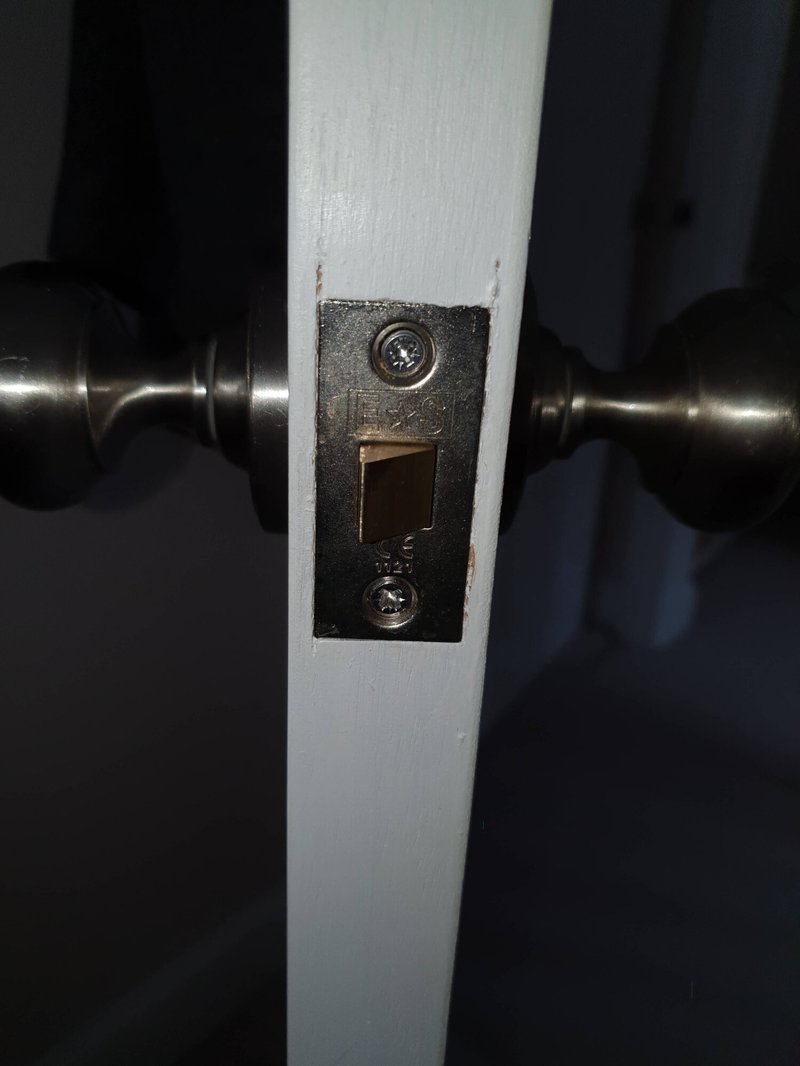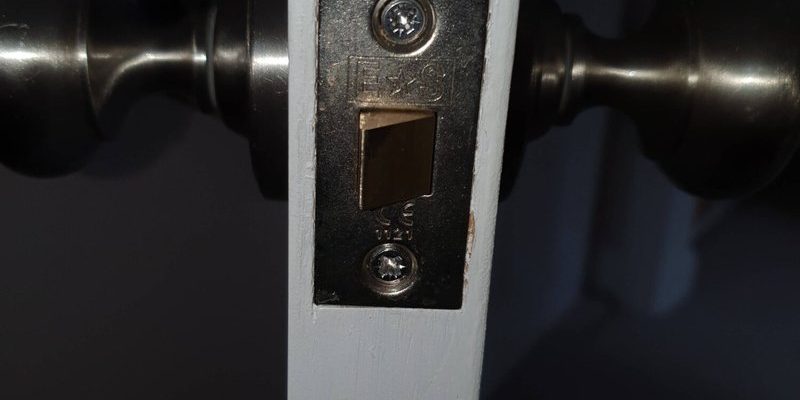
Aligning a door knob latch with the strike plate is a simple task that can save you from a lot of headaches. Think of it like adjusting a picture frame that’s hung slightly crooked—it just needs a little tweak here and there. In this guide, I’ll walk you through the steps to get your door latch and strike plate in sync, so that every turn of the knob feels effortless.
Understanding the Basics of Latch and Strike Plate Alignment
Before we dive into the steps, let’s clarify what we’re dealing with. The door knob latch is the metal piece that extends into the door frame when you turn the knob. The strike plate is the flat piece attached to the door frame that the latch fits into when the door is closed. If these two components aren’t aligned, you’ll find it difficult to operate the door.
When everything is in line, the latch smoothly slides into the strike plate without a hitch. But sometimes, due to wear and tear, misalignment can occur, and that can lead to stuck doors or latches that don’t engage properly. Honestly, it’s a common issue, especially in older homes or those with high traffic doors.
Gather Your Tools
Before you start your alignment journey, you’ll want to gather a few tools. Here’s what you need to have on hand:
- Screwdriver: A flat-head or Phillips, depending on your door hardware.
- Adjustable wrench: Useful for any bolts that may need tightening.
- Wooden shim or small piece of cardboard: Great for testing the latch alignment during adjustments.
- Measuring tape: Ensure precise measurements when needed.
Having these tools ready will make the process smoother and more efficient. You don’t want to get halfway through and realize you’re missing a crucial item.
Check Door and Latch Functionality
Before making any adjustments, it’s a good idea to check how your door and latch are functioning. Close the door and turn the knob to see if the latch engages with the strike plate smoothly.
You might be wondering how you can tell if it’s misaligned. Here are a few signs:
– The door feels stuck when you try to turn the knob.
– You hear a grinding or scraping noise when the door closes.
– The latch doesn’t fully insert into the strike plate.
If you notice any of these issues, it’s time to adjust the alignment. Just remember, it’s better to address these problems sooner rather than later, as persistent issues can lead to more significant damage.
Adjusting the Strike Plate Position
Once you’re ready to adjust, start with the strike plate. Here’s how:
1. Remove the strike plate screws: Use your screwdriver to take out the screws holding the strike plate in place.
2. Shift the plate: Move the strike plate slightly up, down, or sideways to find the best fit for the latch.
3. Test the alignment: Close the door and check if the latch fits into the strike plate without resistance. Having that wooden shim handy can be helpful here!
If it feels better but not perfect, try tightening the screws a little and adjusting again until you find the sweet spot. Sometimes, a small adjustment can make a world of difference.
Adjusting the Latch Mechanism
If adjusting the strike plate didn’t solve the issue, the next step is to tweak the latch mechanism. Here’s what to do:
1. Remove the doorknob: Unscrew the doorknob and take it off carefully. This will expose the latch assembly.
2. Check the latch alignment: See if the latch is positioned correctly relative to the strike plate. You want to ensure it moves freely.
3. Adjust the latch: If the latch is too far from the strike plate, you may need to loosen its screws and shift it slightly. If it’s too close, consider adjusting its position further back.
Make sure to check if everything feels secure before putting the doorknob back on. You wouldn’t want loose components rattling around.
Testing the Door Functionality
After making your adjustments, it’s time for some testing. Close the door and give the knob a turn. Here’s what to notice:
– Does the latch slide easily into the strike plate?
– Is there any resistance when turning the knob?
– Does the door close fully without gaps?
If everything works smoothly, congratulations! You’ve successfully aligned your door knob latch with the strike plate. If not, you might need to revisit the adjustments. Sometimes it takes a little trial and error.
Preventing Future Misalignment
Now that you’ve aligned your latch, it’s wise to take steps to prevent future misalignment. Here are some easy tips:
– Regular Maintenance: Periodically check the latch and strike plate for wear. Tighten any loose screws when needed.
– Handle with Care: Be gentle when closing doors, especially if they’re older or used frequently.
– Weather Considerations: Humidity and temperature changes can affect wood and metal. If you live in a place with significant weather shifts, keep this in mind.
Taking these simple steps can save you time and frustration down the road. You’ll find that maintaining your door hardware can be just as important as the initial setup.
When to Seek Professional Help
Sometimes, no matter how hard you try, you just can’t get it right. If you’ve gone through the steps and your door still isn’t functioning well, it might be time to call in a professional. Here are scenarios where it’s best to seek help:
– You’re unsure about the adjustments and don’t want to cause damage.
– The door frame seems warped or damaged.
– You can’t find a solution, no matter what adjustments you make.
It’s totally okay to ask for help! A pro can diagnose and fix issues that might be beyond a quick DIY adjustment.
In conclusion, aligning a door knob latch with the strike plate is a straightforward task that can make a big difference in your daily life. By following these steps, you can ensure that your doors operate smoothly, keeping your home both convenient and secure. So grab your tools, roll up your sleeves, and get to work—your doors will thank you!
